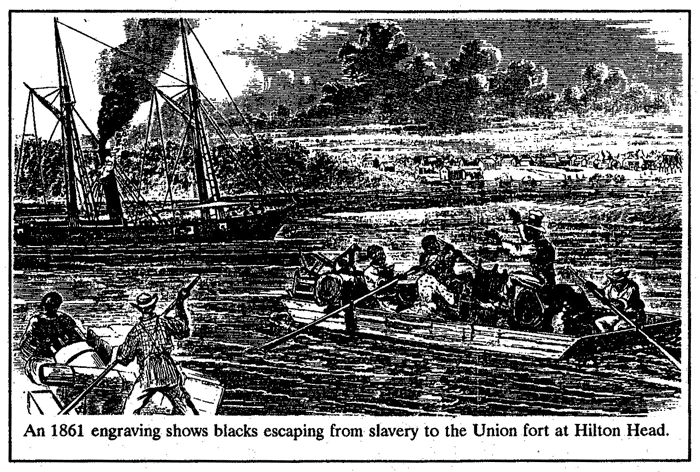Mitchelville - Page 3

Although it is clear that the black slaves were convinced of the Union's role in securing their freedom, the Union Army was not nearly so sure. In fact, these former slaves were not yet free (or freedmen), but were considered by the Union Army to be "contraband of war." In some areas, Union generals even allowed Confederate owners to reclaim "their property" and take blacks back into slavery.
Hilton Head, however, was different. From the very beginning, General T.W.
Sherman (no relationship to General William T. Sherman who marched through the South, ending the war) wrote to the War Department in Washington asking for humanitarian assistance. Many Union officers, however, complained that the blacks were a "burden and a nuisance." Some Union troops stole from the slaves and it is clear from the surviving records that the racial attitudes of some Union troops were no better than most Southerners of the period. General Ormsby M. Mitchel remarked that he found "a feeling prevailing among the officers and soldiers of prejudice against the blacks."
Regardless, the efforts by General Sherman opened the door for missionaries, known as Gideon's Band or Gideonites, to come to Hilton Head and begin teaching and helping the blacks. The Secretary of the Treasury Department, Salmon P. Chase, was a strong anti-slavery voice in the Lincoln cabinet and he sent Edward L Pierce (an attorney and strong abolitionist) to Hilton Head to look into the "contraband negro" situation. Pierce, in February 1862, found 16 plantations on Hilton Head and at least 600 blacks on the island, many coming from other Sea Islands, including Pinckney, St. Helena, Port Royal, Spring, and Daufuskie.
As early as April 1862, a military order was issued freeing the blacks in the Sea Islands, and four months later Lincoln developed his own plan of emancipation – officially making the "contraband slaves" freedmen.


